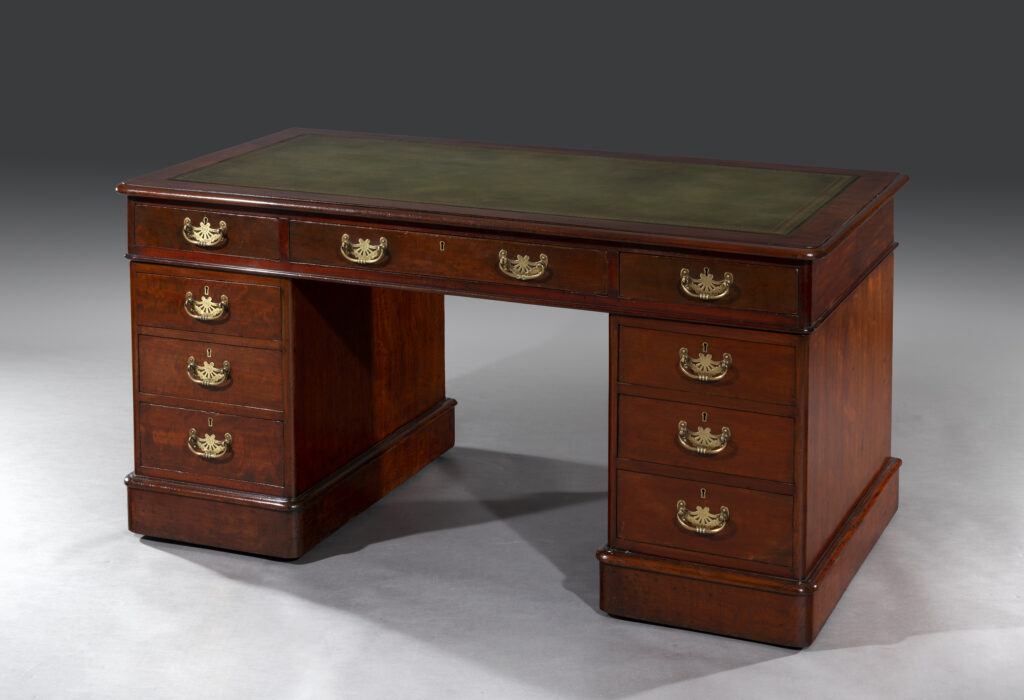Duchal House Knole Settee


Duchal House Knole Settee
English
circa 1860 - 1870
The Duchal House Knole Settee, retaining its original frame, castors and early 17th century Italian floral silk embroidered panels.
This model of settee with single section side wings hinged from the seat originated in the late 19th century, inspired by the original couch at Knole. Its early aesthetic, comfort and draught exclusion from the high backs and wings made it a popular statement piece in Great Halls, bedrooms and galleries in large country houses.
The rectangular, upholstered back and sides are surmounted with the original turned finials. The upper sections of the inside back and sides are upholstered in fine and rare, early-17th century, Italian floral silk hand-embroidered panels. The panels are finely stitched and, unusually, retain their original blue and green colouring. They have been cleaned, conserved and stabilised by Janie Lightfoot, a leading textile conservation workshop, and are in robust condition. The panels depict flowers that were fashionable in the 17th century such as peonies and tulips in garlands with classical acanthus leaves.
The back, seat, outside back, sides and front have been re-upholstered in a modern mink, silk velvet by a specialist, French upholsterer as the original was threadbare. The silk velvet is a beautiful, mink colour that blends with most decorative schemes. Velvet is impossible to photograph accurately. It is a beige, earthy, ochre colour and the nearest pantone is 15-1217 PG Mojave Desert.
The French silk trimmings are of the highest quality, harmonising the colours in the needlework panels and the velvet.
The needlework panels are faced with a ruche, the sides and finials with braid, the front and sides with a shaped, tassel fringe and the sides are secured with tiebacks.
The settee stands on its original castors.
The French silk passmenterie, comprising ruche, braids, tassel fringe and tie backs blends the colours in the velvet and the needlework.
The settee is versatile as the wings can be adjusted so they are open or closed. The settee is extremely comfortable. It is sturdy and suitable for everyday use. The velvet has 100 years of life in it and the needlework panels also having been conserved and stabilised. This settee has been in the same house since it was made and survives in incredible original condition.
Settees of this type derive their name from the celebrated, original at Knole in Kent, the ancestral seat of the Sackvilles, which is thought to date from the first quarter of the 17th century. It combines the dual function of day-bed and settee, and is one of the earliest examples of English seat furniture incorporating fully upholstered seat, back and sides.
During the late 16th to early 17th century a new form of day-bed was introduced to match the contemporary upholstered ‘X’ chairs and stools. They were padded and upholstered throughout and the ends were let down on a toothed steel ratchet to enable the occupant to repose at full length. They were generally destroyed when the coverings had worn out as the woodwork was of little value.
Similar couches were plentiful in France under Louis XIII and can be seen in Abraham Bosse’s engravings of domestic interiors but they were only found at Court and in the houses of great noblemen in this country.
When the contents of the Royal Palaces were dispersed after Charles I’s execution a number of couches were included in the sale. Lionel Cranfield, who became the 1st Earl of Middlesex, Lord Treasurer and Master of the Great Wardrobe to James I, amassed an outstanding collection of furniture and paintings which was inherited by his daughter Francis who was married to Richard Sackville, 5th Earl of Dorset in 1637 and subsequently her son Charles Sackville.
Through his appointment as Lord Chamberlain to William III and Queen Mary, Sackville acquired beds, tapestries, chairs and stools from Whitehall, Hampton Court and Kensington Palace bringing the contents to Knole. As a perquisite or ‘perk’ of the role of Lord Chamberlain Sackville was able to take any furniture which was deemed out of date or unsuitable from the royal palaces.
Provenance:
Duchal House, Renfrewshire, is considered to be one of the loveliest Georgian mansions and estates in Scotland. Until recently, it was the home of the Maclay family for over 100 years. The settee was probably acquired by the shipping magnate Sir Joseph Maclay who played a key role in the outcome of the First World War after Lloyd George made him head of a new Ministry of Shipping. Made a baronet for his service to public life in Glasgow, he was nicknamed 'Holy Joe' as he made sure there was a Bible in every seaman's cabin. "He
was always delighted when orders for more Bibles came through; little did he realise the seamen were using the rice-paper pages to roll cigarettes." Lloyd George visited the house and one of the bedrooms is named after him.
208.00cm (81.89”)(open) x 175.00 (68.90”)(closed) x 93.50 (36.81”)(back) x 110.00 (43.30”)(to top of finial) x 50.00 (19.68”)(seat)
Dimensions
Height 93.50cm (36.81 inches)
Width 175.00cm (68.9 inches)
Depth 88.00cm (34.65 inches)
Stock No: 10729
£10,000.00
In-stock




